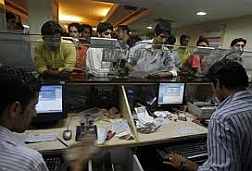The nation’s largest lender, State Bank of India (SBI), has cut interest rates on home and auto loans although the cost of money hasn’t reduced. The one percentage point cut in banks’ compulsory bond holding, or the so-called statutory liquidity ratio (SLR), has done the trick.
The Reserve Bank of India (RBI) last week cut banks’ minimum bond holding from 24% to 23% and SBI wants to take advantage of that. The cut will free up around Rs. 10,000 crore for the bank and it wants to use it to earn higher returns. Typically, a bank earns around 7.5% from investments in bonds but returns from retail assets such as home loans, auto loans and, particularly, personal loans, is much higher.
For the entire banking industry, one percentage point cut in SLR will free around Rs. 62,000 crore. If all banks explore the opportunity and follow SBI’s example, they can cut loan rates, at least in some segments.
However, this is easier said than done. Although the banks till now are required to invest 24% of their deposits in government bonds (the new norm, 23%, takes effect from 11 August), many banks have invested around 30% of their deposits in bonds. This means they could have liquidated their excess SLR holdings even before the RBI announcement and used the money to give loans. They have not done so and probably will not do even after the SLR cut simply because government paper is a risk-free asset while loans can turn bad. Banks need to set aside money for bad loans and that affect their profitability. In fact, provisions for bad loans could more than offset higher income from loans.
Barring a few exceptions, most banks’ bad loans are rising. Except for SBI, United Commercial Bank and Andhra Bank, all state-run banks have announced June quarter earnings. In private sector, Dhanlaxmi Bank Ltd, Jammu and Kashmir Bank Ltd and Lakshmi Vilas Bank Ltd are yet to announce June quarter earnings. A look at the industry’s earnings makes it clear why they are not excited about giving loans. Central Bank of India, Union Bank of India and Punjab National Bank—three large public sector banks—have piled up the maximum bad loans in past one year. In absolute terms, Central Bank’s gross non-performing assets (NPAs) have grown more than two-and-a-half times in past one year, from
Rs. 2,883 crore to
Rs. 7,510 crore. For Punjab National Bank, it’s more than doubled, from
Rs. 4,894 crore to
Rs. 9,988 crore. Union Bank’s gross NPAs have grown 1.75 times—from
Rs. 2,883 crore to
Rs. 6,541 crore. On a relatively smaller base, Corporation Bank’s gross NPAs, too, have doubled, from
Rs. 848 crore to
Rs. 1,689 crore, while Indian Bank’s gross bad loans jumped from
Rs. 806 crore to
Rs. 1,554 crore between June 2011 and June 2012.
Indian Bank, however, has been able to bring down its gross NPAs in the June quarter from March quarter. Two other public sector banks have done so—Oriental Bank of Commerce and Bank of Maharashtra.
In the private sector, ICICI Bank Ltd has been able to marginally bring down its gross bad assets in June 2012 from June 2011, although they have risen from the quarter ended March. Development Credit Bank Ltd’s gross NPAs have been progressively coming down since June 2011. HDFC Bank Ltd, Axis Bank Ltd, Kotak Mahindra Bank Ltd, IndusInd Bank Ltd, ING Vysya Bank Ltd and Karur Vysya Bank Ltd have all piled up higher gross NPAs in past one year although the quantum of rise is smaller than what their public sector peers have been witnessing. Yes Bank Ltd is an exception. Its gross NPAs have almost doubled, although from a low base—from
Rs. 56 crore to
Rs. 109 crore. After setting aside money for bad debts, the net NPA figures for quite a few banks look quite ugly. For instance, for Central Bank, it has risen almost four-and-a-half times in past one year, from
Rs. 1,082 crore to
Rs. 4,853 crore; for Punjab National Bank, it has more than doubled, from
Rs. 2,091 crore to
Rs. 4,917 crore. For Union Bank, it has doubled—from
Rs. 1,893 crore to
Rs.3,747 crore. Here, too, private banks are better performers. ICICI Bank has, in fact, brought down its net NPAs from
Rs. 2,303 crore to
Rs. 1,905 crore. ING Vysya Bank has pared its net NPAs. Yes Bank’s net NPAs have grown manifold, but on a low base— from
Rs. 2.67 crore to
Rs. 23.72 crore.
A bank’s bad loans, as a percentage of the overall portfolio, can go down despite a rise in absolute numbers if its loan assets grow higher than bad loans. And the net NPAs, in percentage terms, go down after a bank sets aside money or provides for the bad loans. In June, three banks have more than 4% gross NPAs. They are Central Bank of India, State Bank of Mysore and Development Credit Bank. Another nine banks, led by Union Bank of India, have more than 3% but less than 4% NPAs. Only three banks have less than 1% gross NPAs—HDFC Bank, IndusInd Bank and Yes Bank.
Only Central Bank of India has more than 3% net NPAs and five others more than 2% but less than 3% net NPAs. And, 15 of the 35 banks that have announced earnings have less than 1% net NPAs. This list includes Yes Bank, Axis Bank, HDFC Bank, Kotak Mahindra Bank, Bank of Maharashtra, Syndicate Bank, Bank of Baroda and ICICI Bank.
Statistically, bad loans in Indian banking industry, both in percentage terms as well as absolute figures, have been the highest for several quarters and will rise further. RBI is in the process of tightening loan restructuring norms. Most banks’ books now carry more restructured assets than bad loans. This will change soon.
Live mint news
www.marketfutureindia.com







